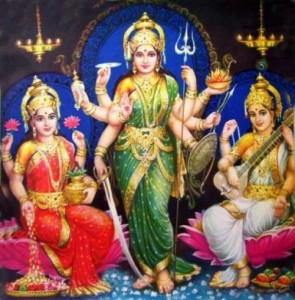As promised, here is the second installment of this series. All these posts actually lead up toward my Lent post coming up this Wednesday. Today we’ll talk about the masculine nature of the divine. Tomorrow, the feminine. Then we’ll wrap it up with the culmination of Lent on Wednesday where I’ll explore the meeting of the sexes: conception.
Let’s get started.
In part one from last week, I shared an interesting experience I had in the shower. I talked about how, after catching a glimpse of the moon in the window, I was suddenly overwhelmed by the feeling of a feminine presence. All of you came away from my description with various conclusions…and that was the idea. As someone whose spiritual practice requires that I be something of a mirror, my ambiguity in many of my posts serves as a way for you to study your own conclusions: why you arrived there, what are other ways of thinking about this, etc.
Now, after reflecting on this experience, I’ve dug a little deeper into a more rounded model of sexual symbolism within religion. Please note, this is my personal reflection. It may not apply to you. My purpose here is to stir you up, get you thinking out of the box, and help ignite a passion for a deeper relationship within your own spirituality/religion/philosophy.
As I studied my experience in the shower and the following days, I expanded this motif over the course of the last year. If you followed along closely, many of you noticed that I had a unique experience with “presence” at least once a month. This presence manifested itself in various ways, often through the lens of the faith I adopted that month.
But what if we went larger, more general?
My study revealed a surprising demonstration of how the male, female, and neutral child roles/symbols play out in our spiritual development. Here is a look at the male gender, its traits, relevant examples from various religious sources, and what it means for my personal journey.
God the Father, Penetrator, Protector, Teacher, Disciplinarian:
 Yes, I said “Penetrator.” In most cases, when we run across a male form of deity, one of his more dominant features is that of penetration–either into the lives, history, or souls of humanity. This aspect implies his familiar nature as “father” or “creator.” Here are some examples:
Yes, I said “Penetrator.” In most cases, when we run across a male form of deity, one of his more dominant features is that of penetration–either into the lives, history, or souls of humanity. This aspect implies his familiar nature as “father” or “creator.” Here are some examples:
- In the Torah book of Genesis chapter 2 verse 7, God is said to have created man “from the dust” and “breathed into his nostrils the breath of life.” In this way, God penetrated humanity with his very life source. He animates us–our bodies and lives–with a physical and spiritual union. Imagine the passion of this life-giving exchange for a moment, this ultimate act of creation.
- Jump forward to the New Testament of the Bible. Here again, God penetrates our lives, only now in a more physical
 way. In the first chapter of St. Luke’s gospel, Mary is visited by the angel Gabriel. She’s terrified, however Gabriel informs her of something incredible: she will give birth to one who will be called “the Son of the Most High.” Mary is confused because she’s, apparently, a virgin. But Gabriel says in verse 35, “The Holy Spirit will come upon you, and the power of the Most High will overshadow you.” God here is penetrating humanity physically, and then with the life-changing ministry of Jesus, spiritually. The divinity of Christ, as the seed of God, mixes with humanity and creates something entirely new: the new kingdom and life Jesus constantly spoke about in the New Testament.
way. In the first chapter of St. Luke’s gospel, Mary is visited by the angel Gabriel. She’s terrified, however Gabriel informs her of something incredible: she will give birth to one who will be called “the Son of the Most High.” Mary is confused because she’s, apparently, a virgin. But Gabriel says in verse 35, “The Holy Spirit will come upon you, and the power of the Most High will overshadow you.” God here is penetrating humanity physically, and then with the life-changing ministry of Jesus, spiritually. The divinity of Christ, as the seed of God, mixes with humanity and creates something entirely new: the new kingdom and life Jesus constantly spoke about in the New Testament.
- In the Hindu faith, we see countless examples of the divine play between male and female. Perhaps the most
 important of these is one of my favorites, Lord Krishna. Lord Krishna is an incarnation of the Supreme Lord, often represented in the form of the god Vishnu. Vishnu is the divine aspect which dons the clothing of material existence in order to restore righteousness and dharma in the universe. He accomplishes this throughout the ages, penetrating, disciplining, and teaching humanity with his various forms. In the Rig Veda, one of the foundational scriptures of Hinduism, it is written: “I saw a cowherd. He never falls from his position; sometimes he is near, and sometimes far, wandering on various paths. He is a friend, decorated in various clothes. He comes again and again to the material world.” This passage of course, talks about Vishnu’s consistent involvement with the world through various forms. Krishna’s name is the “attractive one”, among others. He seduces us, entrances us, calls us to union with him.
important of these is one of my favorites, Lord Krishna. Lord Krishna is an incarnation of the Supreme Lord, often represented in the form of the god Vishnu. Vishnu is the divine aspect which dons the clothing of material existence in order to restore righteousness and dharma in the universe. He accomplishes this throughout the ages, penetrating, disciplining, and teaching humanity with his various forms. In the Rig Veda, one of the foundational scriptures of Hinduism, it is written: “I saw a cowherd. He never falls from his position; sometimes he is near, and sometimes far, wandering on various paths. He is a friend, decorated in various clothes. He comes again and again to the material world.” This passage of course, talks about Vishnu’s consistent involvement with the world through various forms. Krishna’s name is the “attractive one”, among others. He seduces us, entrances us, calls us to union with him.
- Our last example comes from the Islamic tradition. As I read the Qur’an during my time with Islam, I was struck by

The Cave of Hira the intensity and tone of the verses. Frankly, the English is quite harsh compared to the sway and beautiful Arabic of its origin, however the message is clear: guidance and correction. Nowhere is the tone for the Islamic movement of the divine masculine clearer than in its very inception with Muhammad’s experience in the Cave of Hira. During meditation, Muhammad was suddenly overcome by an intense and potent force. Quite different from Mary’s gentle experience with the angel Gabriel, the prophet Muhammad struggled with the angel when pressed to “recite!” A’isha, one of the beloved wives of Muhammad, recounted his experience this way: “The angel caught me (Muhammad) and pressed me so hard that I could not bear it any more…” Here we see the masculine nature of dominance, discipline, and urgency. Just as God breathed life into Adam, Muhammad was pressed of his old breath (life) until he was forced to take new breath upon which his next words were that of the Qur’an. Sometimes, father’s show us tough love. Sometimes, life roughs us up a bit and glean our greatest lessons.
There are far more examples from the various traditions of the world of how the divine masculine (or male archetypes of our shared psychology) influence our development, however I only have so much room. What I found when examining my own growth was how Project Conversion itself was indeed as masculine form in my life. The very experience was a penetration into my former self, and each immersion into the faiths was a deposit of new seed–a breath of new life–into my mind and body. In a very real way, Project Conversion was a type of “intercourse with faith.”
I want you to wrestle with these terms and images I’ve shared with you today. Is it wrong to use such symbolism if it brings us to a greater end? We don’t have to go middle school with the subject of sex. Think about it: how often are we uncomfortable about something only because we are insecure about it? Maybe I’ve crossed a line, using sexuality and its terms with religion and spirituality.
Then again, I’m all about crossing lines (where appropriate), including the ones I’ve set up for myself.
What line will you cross today? Will you allow the masculine nature of the divine penetrate and breathe new life into you?
Tomorrow, we get in touch with the feminine.

